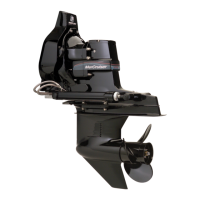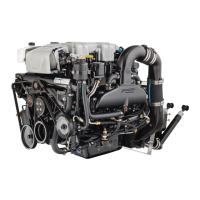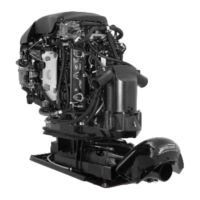• If the beeping does not reoccur, the problem does not need immediate
attention but will require you to see your authorized Mercury Marine
dealer to diagnose and clear the fault.
If the propulsion control module (PCM) detects a fault signal from an engine
sensor, it records a fault code. A computer diagnostic system (CDS) is required
to extract specific problem codes from the PCM.
CALIFORNIA ENGINES
In addition to the aforementioned procedure used to clear active faults, the
California Air Resources Board (C.A.R.B.), requires a special clearing
procedure for certain warning faults. These faults are:
• MAPR_TPS1Rationality and TPS2
• TPS1_ETC_NoAdapt, TPS2, TPS3, TPS4
• TPS1_RangeLow, TPS2, TPS3, TPS4
• TPS1_RangeHigh, TPS2, TPS3, TPS4
• BaroRange
• Injector1_OutputFault, Injector2, Injector3, Injector4, Injector5, Injector6,
Injector7, Injector8
• Horn_OutputFault
• MAP_Angle_RangeHigh
• MAP_Angle_RangeLow
• SysVolt_RangeHigh
• SysVolt_RangeLow
• IAT_RangeHigh
• IAT_RangeLow
• StbdECT_RangeHigh
• StbdECT_RangeLow
• EncoderFault
• CrankCamTrigger
NOTICE
The engine must start to clear the fault using the following procedure.
To clear the fault, the engine must be started three times. If the horn still
sounds after three start cycles, the fault still exists. See your authorized
Mercury dealer to fix the problem and clear the fault.
Electrical System Overload Protection
If an electrical overload occurs, a fuse or circuit breaker opens. Locate and
correct the problem before replacing the fuse or resetting the circuit breaker.
A circuit breaker protects the engine wiring harness and instrumentation power
lead. Reset by raising the flag to the retracted position.
OPERATION
eng 33
